We had walked by it many times, and the hidden treasures inside had always intrigued us, especially since they were stored in what looked to be a dilapidated old armory.
The building, in fact, was on the site of a fortified wall that had ringed Paris in 1841, under Louis-Philippe Napoléon. He was the monarch who, through the work of Baron Haussmann, gave us the Paris of cream-colored stone buildings and intricate grilled balconies.
This structure, which looked nothing like that, dated back to 1894, and so does the building’s role as the storage site for the sets, scenery and costumes of the National Opera of Paris. Note “National.” Like many cultural enterprises in France, the 350-year-old opera is state-run.
Charlie and I recently took a tour of the facilities as part of the Journées du Patrimoine (Heritage Days). That’s the annual fall weekend when thousands of French historical, cultural and other sites open to the public. As I’ve written before, France is a country that likes secrets and hidden places, and the Ateliers Berthier (Berthier Workshps) certainly qualifies.
Like almost everything else we wanted to see, this was booked up. But we showed up anyway and were told they could take us in a couple of hours.
This 8,000- square-meter warehouse on Boulevard Berthier at the northern edge of the city is far from the two performance halls where its contents are deployed. The old opera, the Opéra Garnier, is just north of the Place Vendôme, and now puts on mostly ballets. The new opera, the Opéra Bastille, is located at…well, you know. So all this stuff has to be trucked, on as many as 16 trucks, through town whenever a new performance opens.
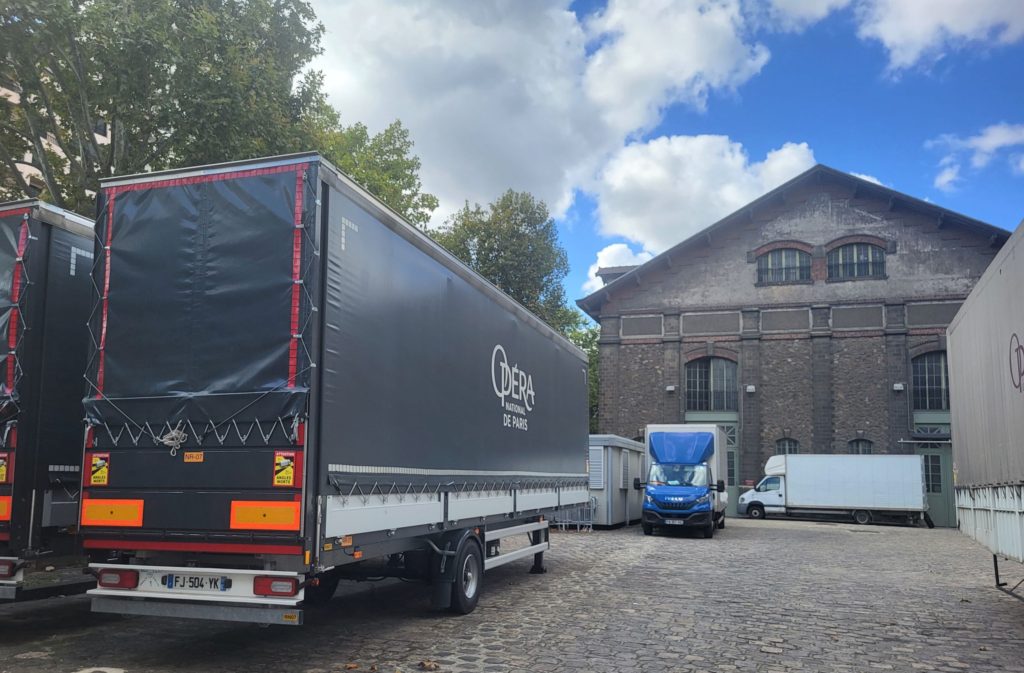
That’s better than the old days, when the scenery was wrapped around a long pole and walked to the Garnier. As the caption says, it took 24 men to carry a load that weighed as much as 400 kilos (880 pounds).
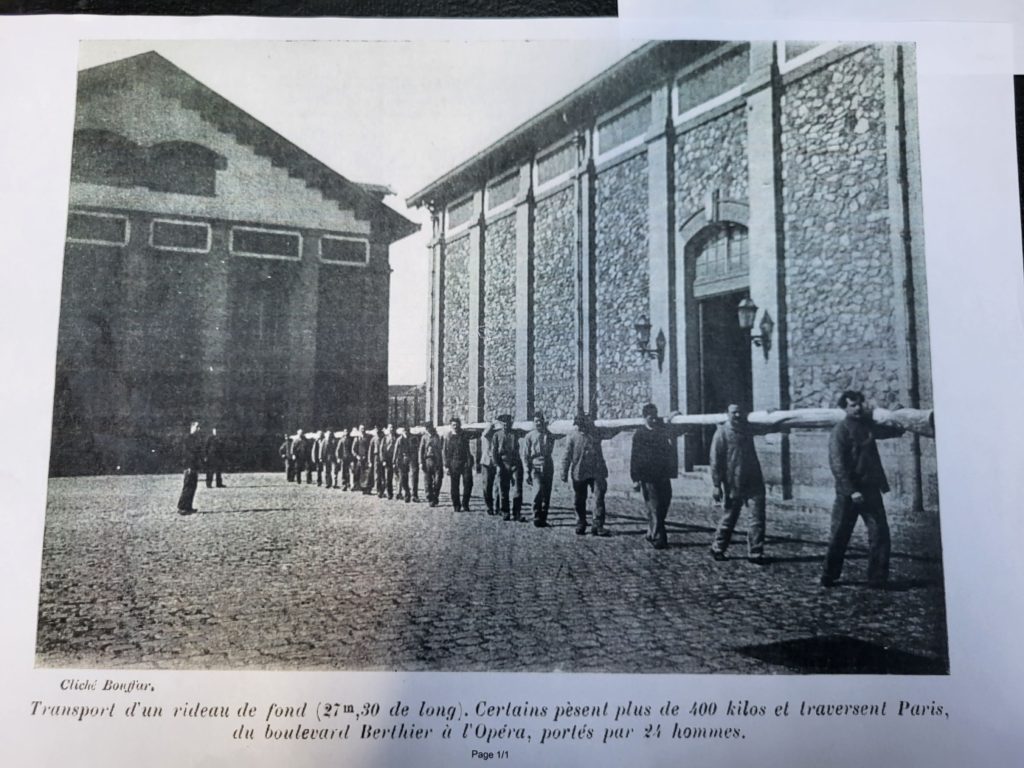
When we got there, we were delighted to find that the heads of each department were the guides for our small group.
First was logistics. It turns out that Opera performances also tour, so everything has to be crated and shipped to, say, Tokyo.
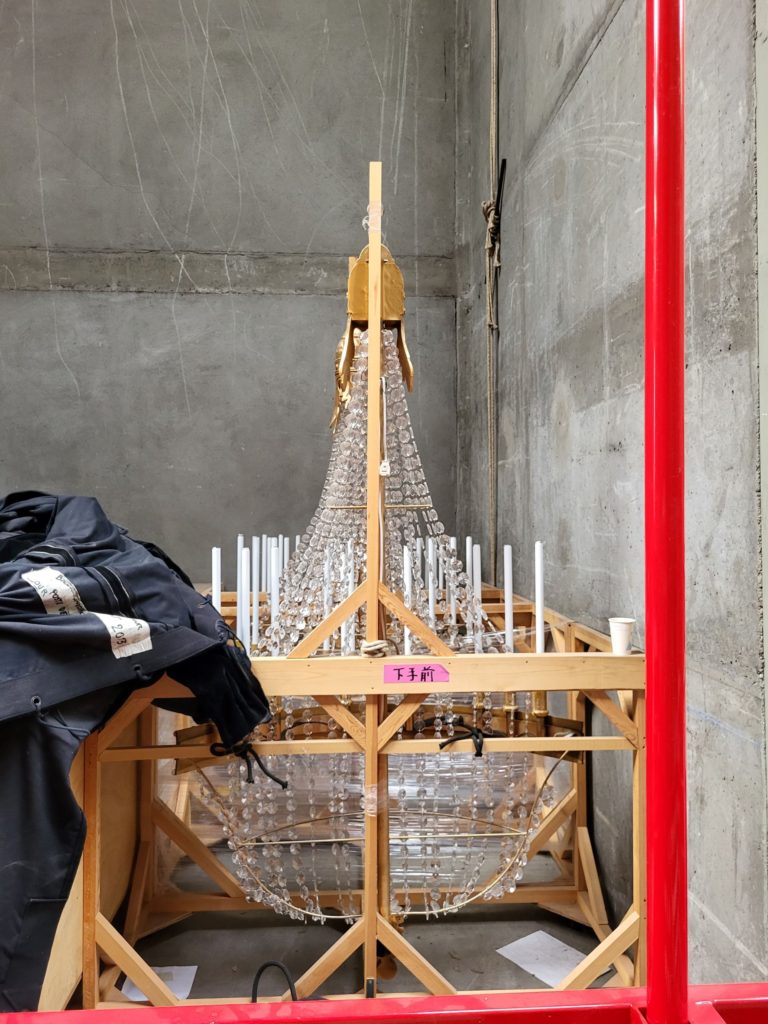
In the old days the backdrops were stored vertically, which seems pretty efficient until you think about the work involved in getting them in and out.
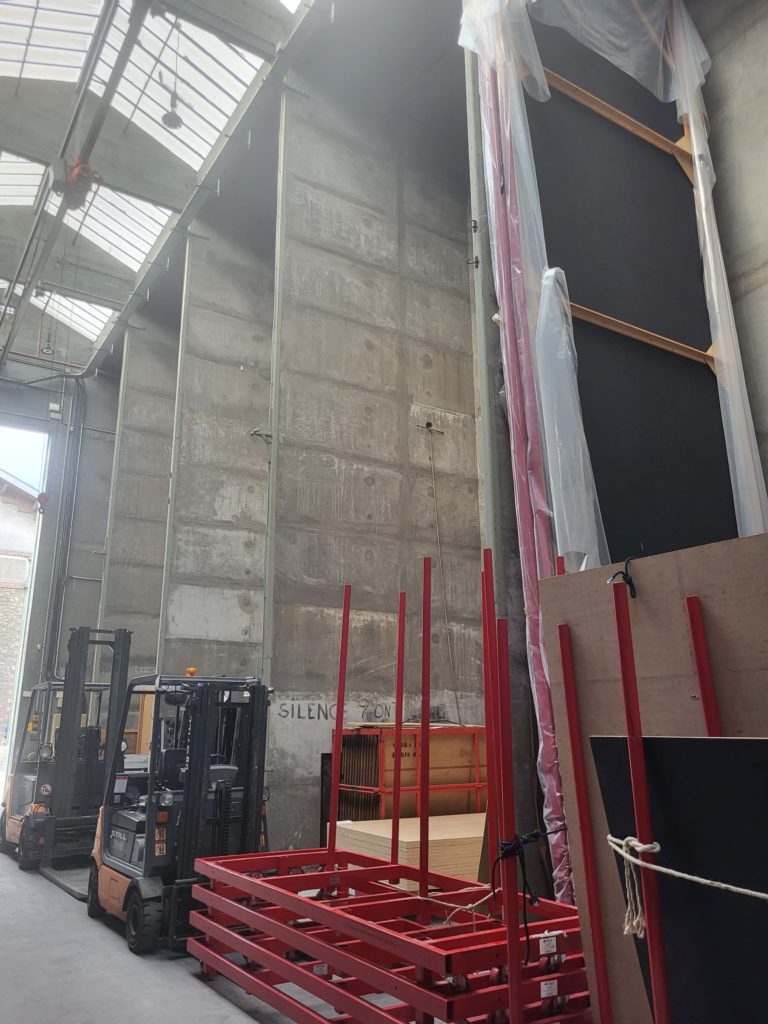
These days they are folded, wrapped in plastic and stacked one atop another. We figured they must have found crease-proof material.
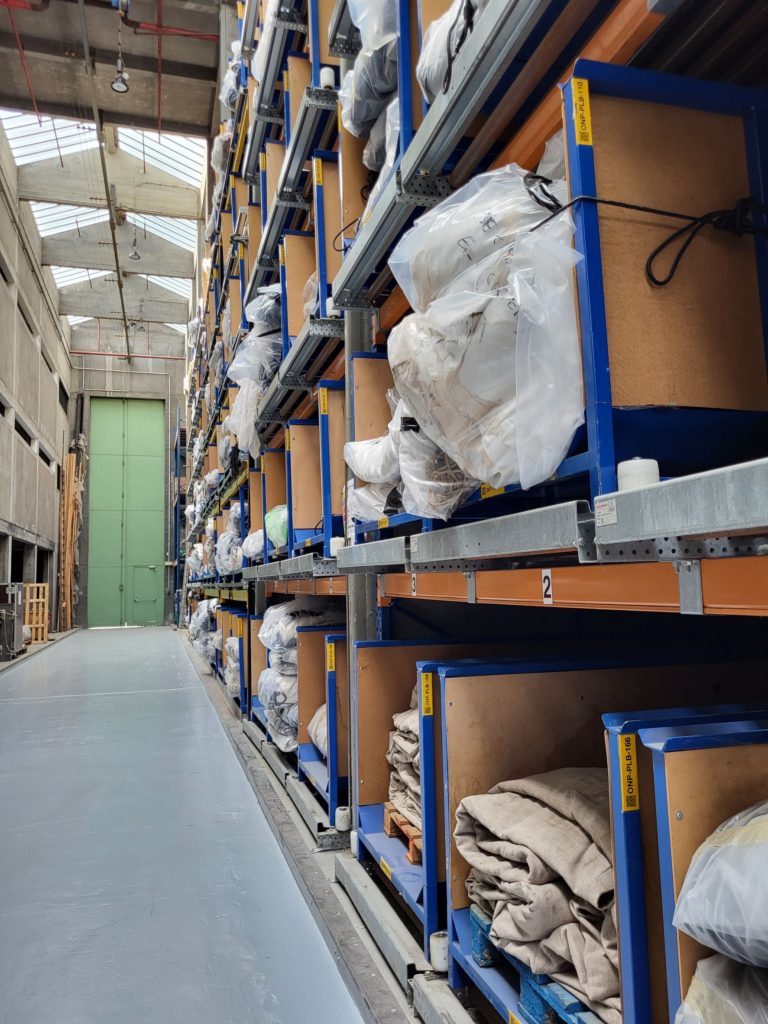
Next it was on to the scenery department, where friezes from the recently performed “Giselle” were laid out on the floor for us to see. When on stage, they are fastened to the stage ceiling with those little black cords.

To test out their concepts, the team – only six people, plus lots of specialized freelancers – uses this mockup as a guide. It’s a 1:25 scale model of the real stage, including the correct angle of raking (higher in back).
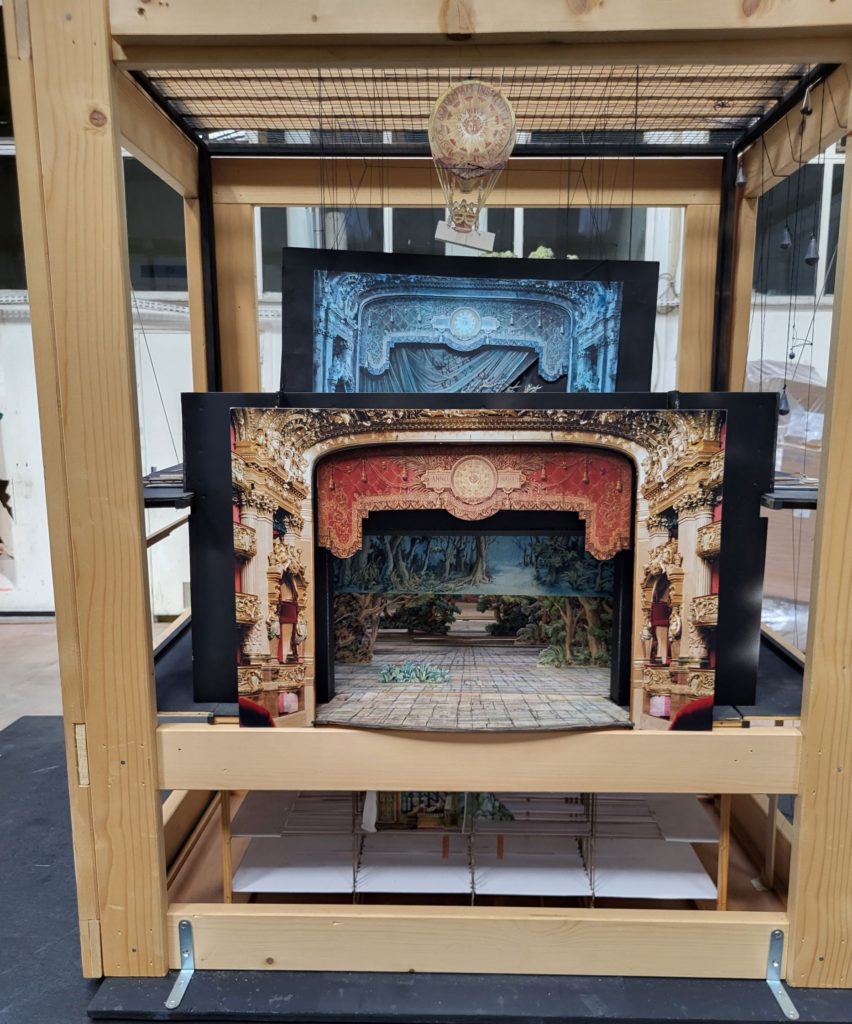
The completed product looks like this:
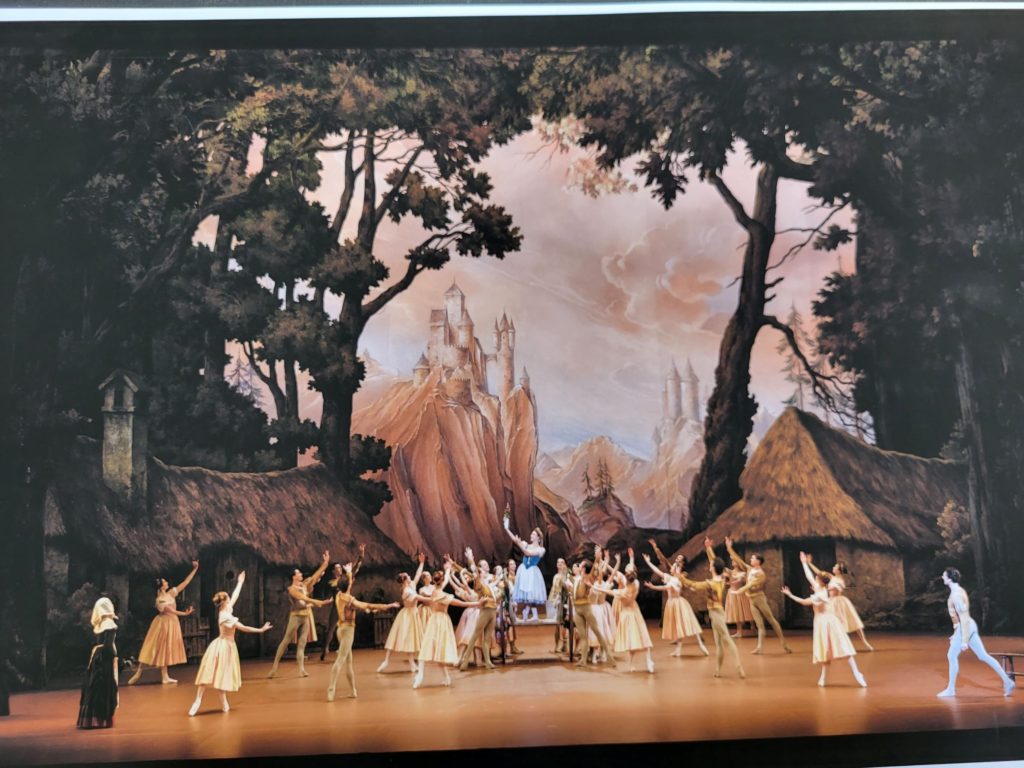
The pièce de resistance was, of course, the costume department. On three heated and air-controlled floors in another building were stuffed what must have been thousands of tutus, bear suits, knightly armor, soldier uniforms and embroidered robes. All hand-made.
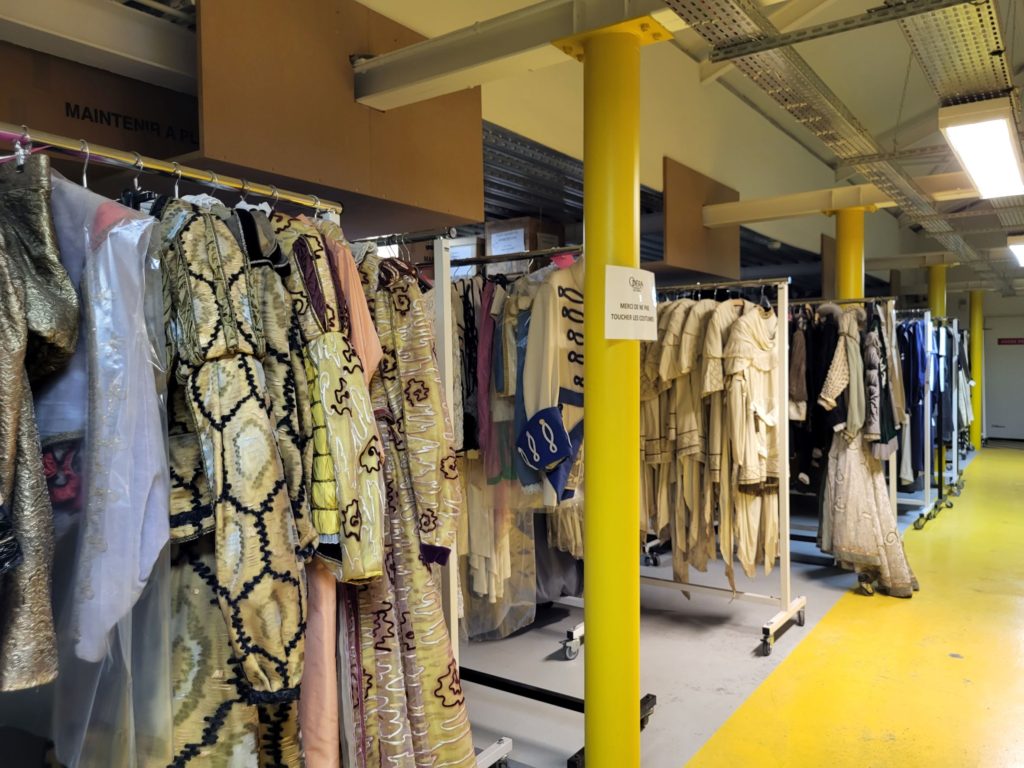
It was at about this point that I realized that all the employees here – the costume department alone employs 150 – were civil servants, working for the République. And the three department heads had spent all day showing us, and many groups like us, around on a weekend. It was clear they were proud of what they did.
And yet the items in this facility probably get less thought from an opera audience, or a ballet audience, than any other aspect of the performance. Viewers might never know that a whole team of scenery painters checks their work on-site at Garnier or Bastille in the days before a performance just in case the stage lighting has altered any of the colors.

Or that tennis balls are inserted into dance floors to make sure they are level and yet springy.
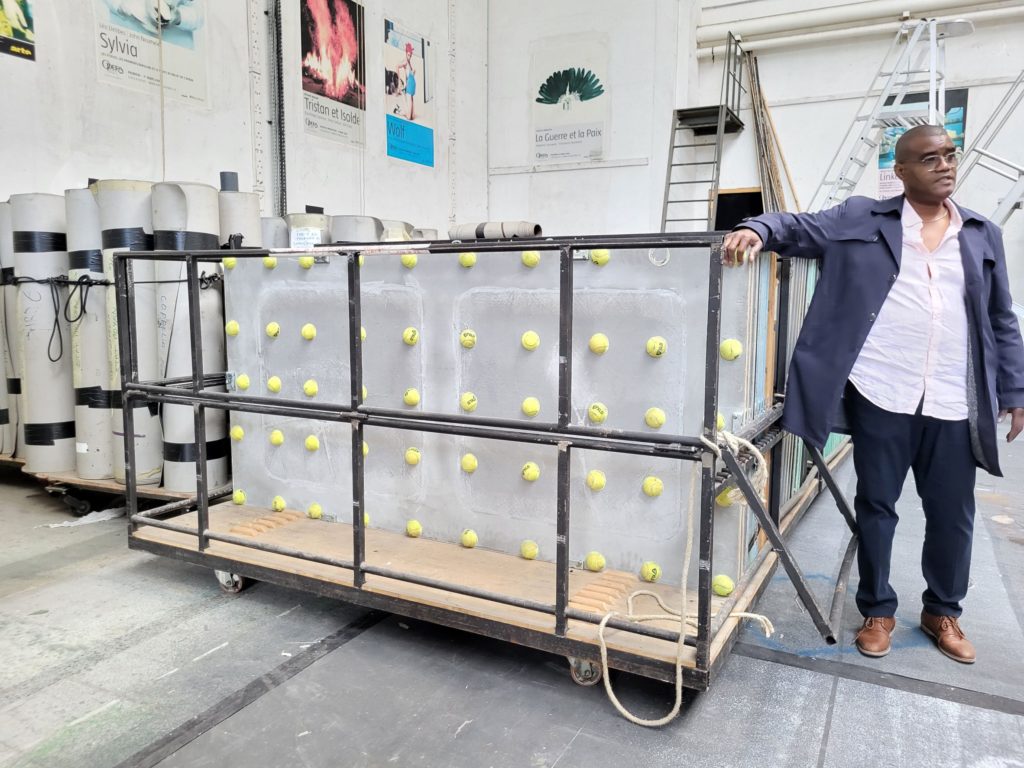
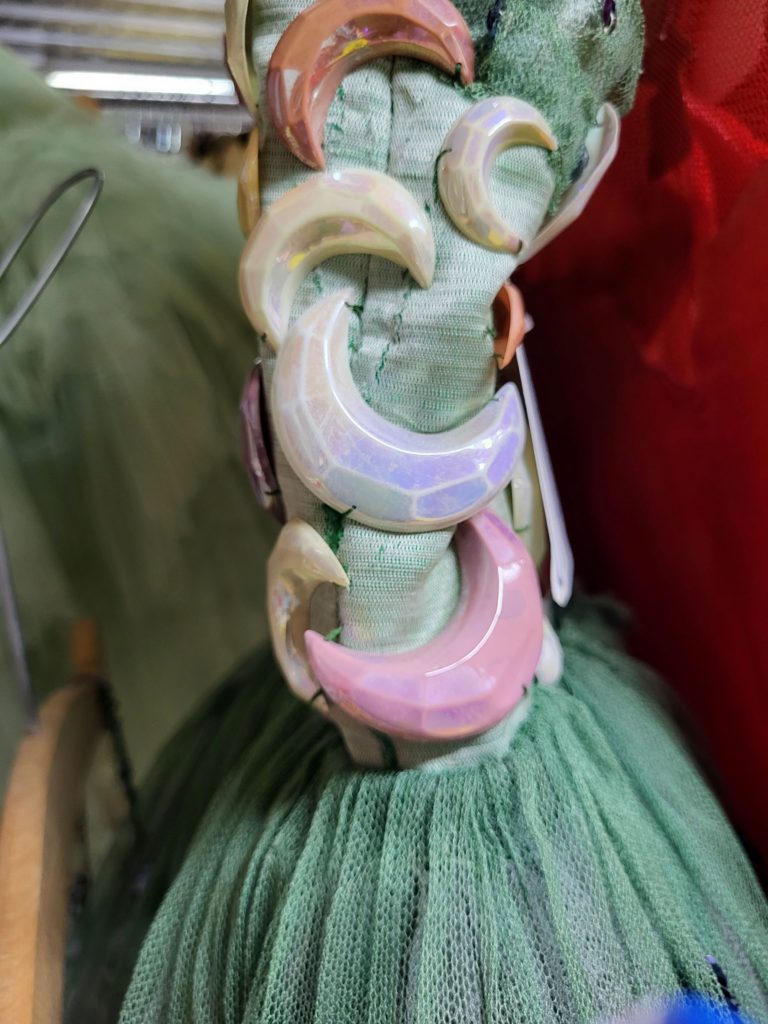
Or that someone has sat at a worktable and painstakingly sewed sparkles or baubles into dozens of costumes by hand.

Or that each tutu has dozens of layers of tulle.
Now we know and we’re glad we do. This stuff, and the people who take care of it, deserve some time in the limelight too.

Thank you.
Incroyable.
Absolument!
Anne—This one is really special and totally new information, at least for me. Thanks so much, as always!- Shep
Thanks, Shep!
I envy you this experience Anne. No doubt you’ll never experience opera the same way again. Or the theatre.
I’m sure that’s true!